LangGraph and UiPath: streamlining enterprise LLMs

Introduction
The race is on to embed generative AI (GenAI) in the enterprise to deliver more efficient, intelligent, and adaptive operations and workflows. However, developers often face stark development and implementation challenges in managing models, how manual touchpoints interact with the AI at work, and orchestrating between different systems.
Fortunately, there’s a solution. As automation practitioners continue to immerse themselves in the implementation of GenAI, it's very likely they’ve encountered the LangChain framework.
LangChain is an intuitive framework and library for building applications for large language models (LLMs), including prompt management, chaining of prompts, context grounding, and memory retention. These are all critical elements in building progressively more intelligent, context-aware applications and agentic workflows. Likewise, UiPath plays a foundational role in simplifying not just what businesses automate, but how they automate. UiPath provides a suite of category-leading, low-code and no-code tools spanning traditional UI and API automation to intelligent document processing and communications mining. The UiPath Platform enables users of varying technical backgrounds to discover, build, manage, and continuously improve enterprise workflows at scale.
As the age of GenAI continues to take hold, the power of LLM reasoning combined with a ‘democratized’ approach to building automations will prove a formidable combination.
Enter LangGraph plus UiPath Studio
LangGraph enables LLM application developers to build and host agentic ‘cycles’ in which LLMs are not only providing single or multi-step outputs, but deciding on a course of action and executing those actions until a task is complete. In most cases, these agents will still need input from business users and/or automation practitioners.
Here’s how this might look from an implementation standpoint:
Using LangGraph, developers can expose endpoints using dynamic breakpoints within their agentic flows when inputs are needed from humans before continuing. This human in the loop validation step should be very familiar to UiPath users as an ‘attended’ automation.
Using Connector Builder of the UiPath Integration Service , users can easily set up custom connectors and activities that interact directly with LangGraph endpoints. This eliminates the need to build or manage custom code to execute API calls or normalize responses.
With the development of Action Apps, the scope of both what gets validated by the human, and what is ultimately sent back to the agent or automation, has expanded exponentially. UiPath users can easily build apps that allow users to both review and manually update LLM reasoning and actions. They can also execute any other action in the activity catalog or even initiate a completely separate UiPath automation before sending updated values back to the LangGraph agent or UiPath automation.
Building an efficient resume screening process
In the following example, you will see various automation tools, including LangGraph agents, working in concert to accomplish a common end-to-end, enterprise business process: candidate resume ingestion and screening.
1. Before starting the automation build, we have to first build and configure our LangGraph agents and create a custom Connector using Integration Service’s Connector Builder. Also, we’ll build our custom Action App for our human in the loop validation step.
Example LangGraph agents:
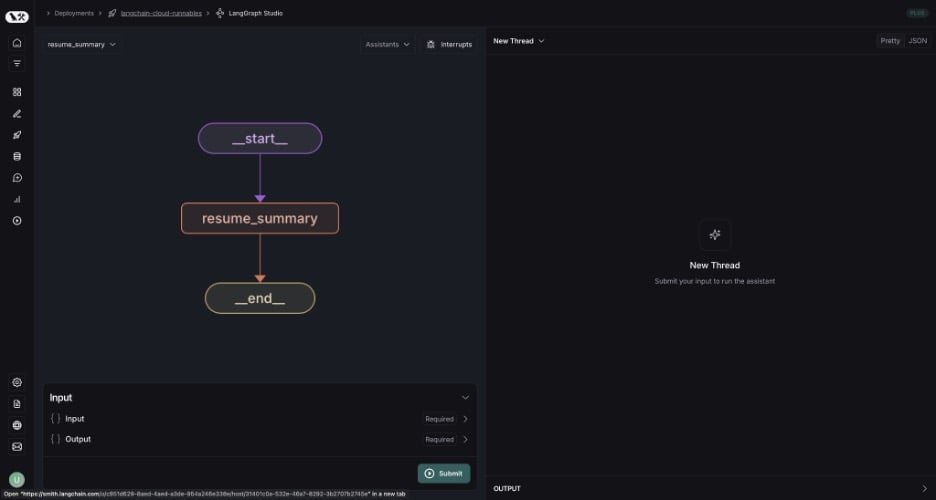
2. Next, we will configure the custom Connector in Integration Service and add activities for each agent.
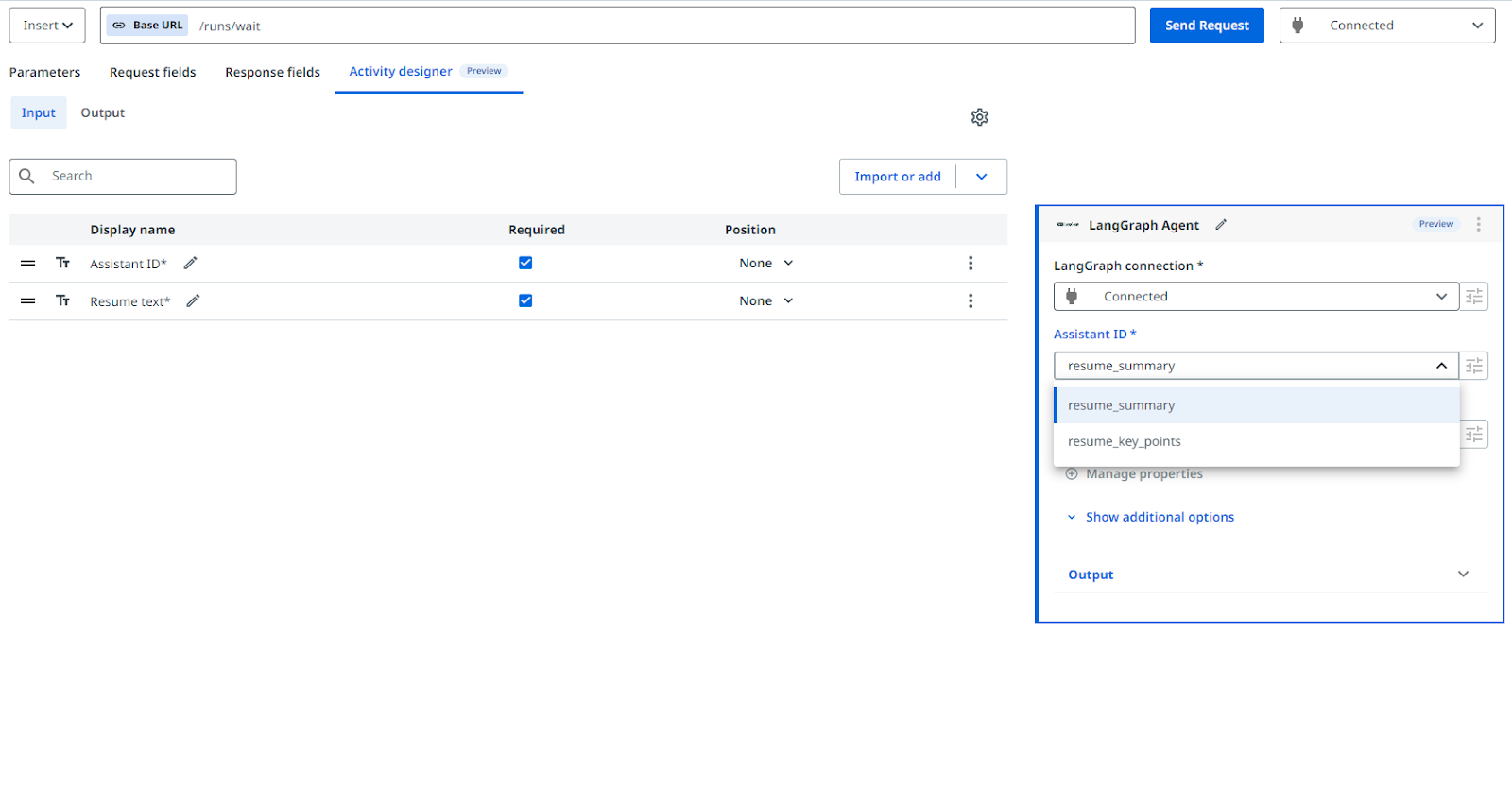
3. With the Integration Service Connector published, we can move on to the custom validation app or Action App. We will go to the UiPath App designer for this.
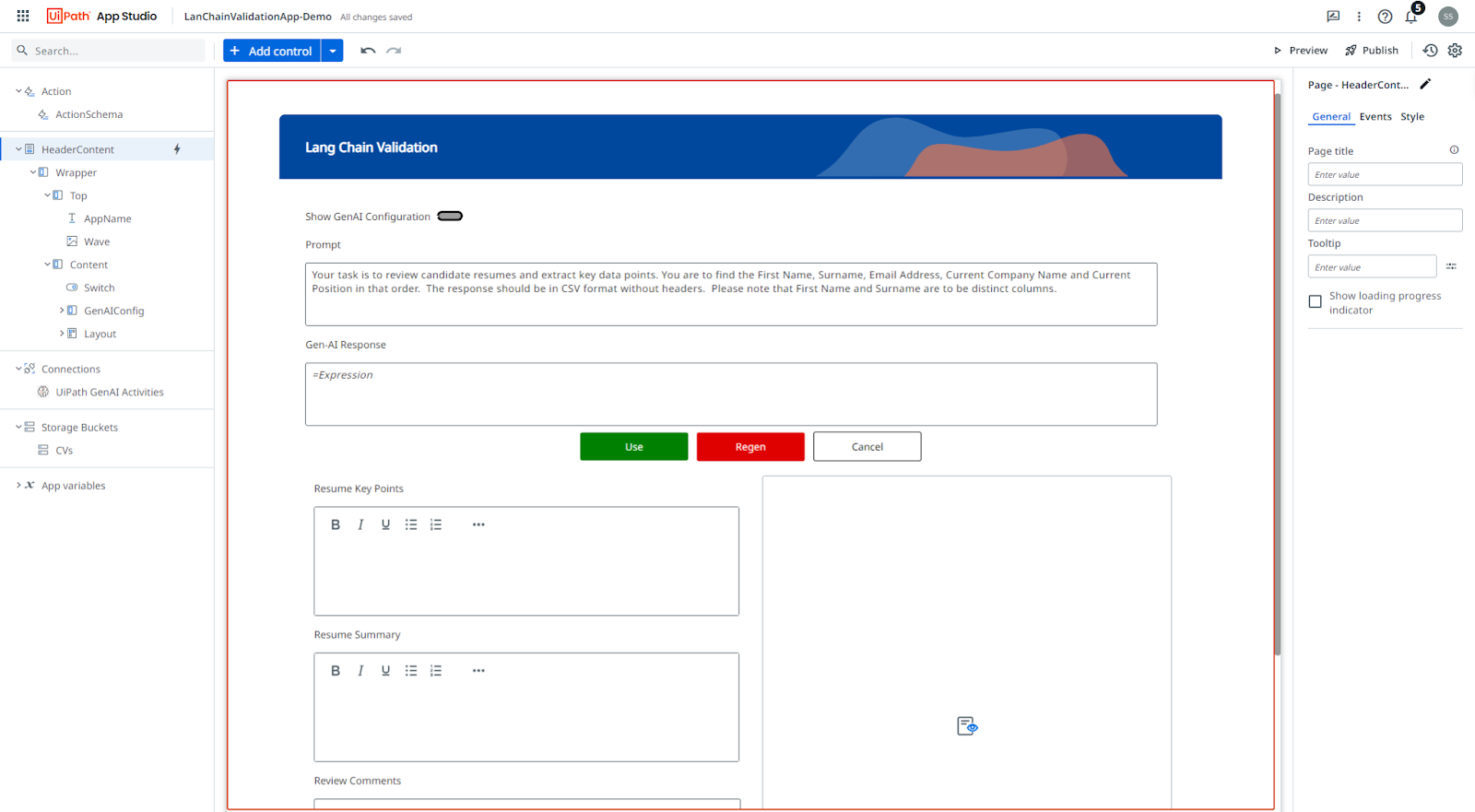
4. In the Action schema, we will identify the automation inputs and outputs to pass the appropriate values to the Action App for validation.
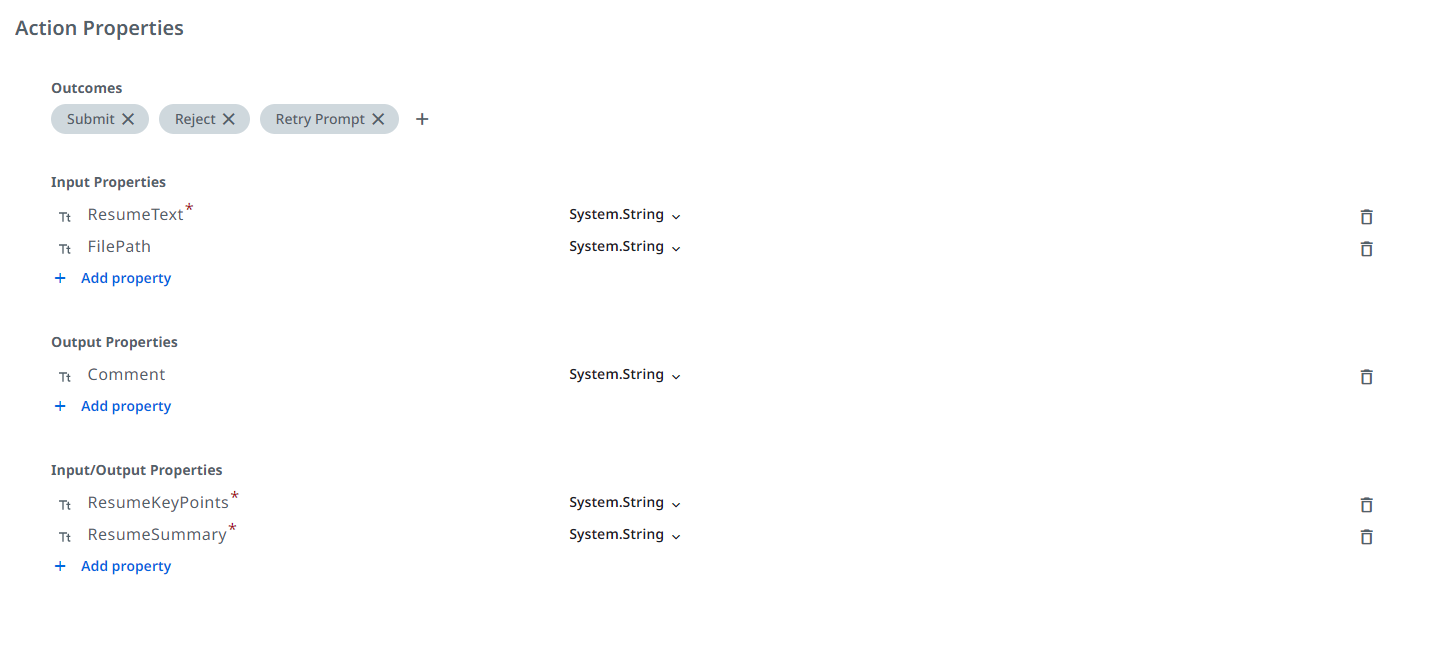
5. Having published the app and deployed it in UiPath Orchestrator, we can now turn to UiPath Studio to start building the automation flow.

6. Using a polling event trigger, the robot will start the ingest process when an email is received containing a candidate's resume.

7. Various API-based calls are made to Google Suite products for auditing purposes and pre-processing.
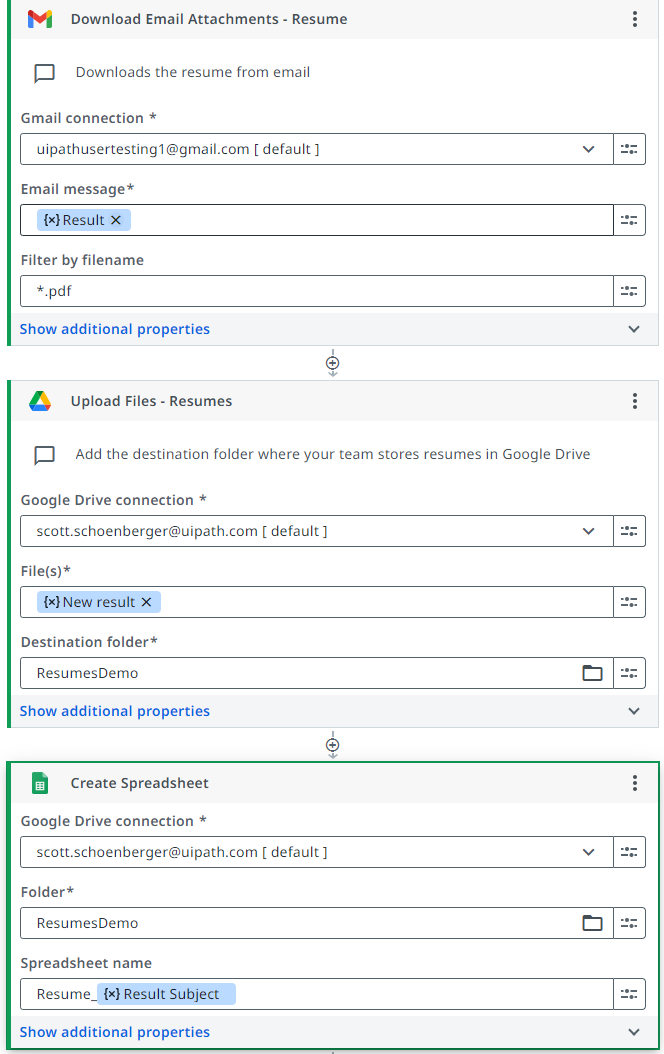
8. The resume content is extracted using UiPath Document Understanding and our platform’s proprietary optical character recognition (OCR)
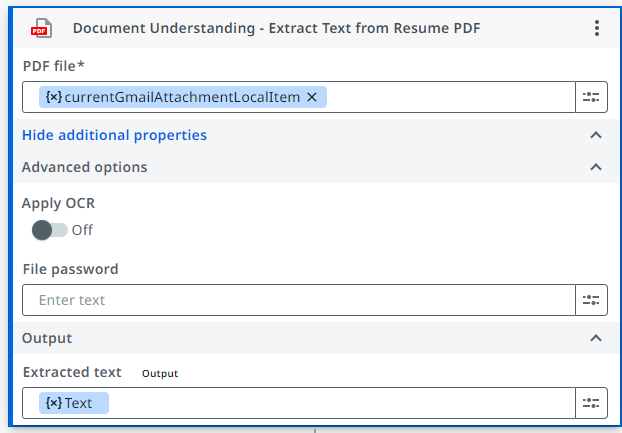
9. The text from the resume is passed to the LangGraph agent to extract key information, such as name, email, title, etc. The agent also summarizes the candidate's experience with a series of custom prompts. This step uses our custom Integration Service activities from above.
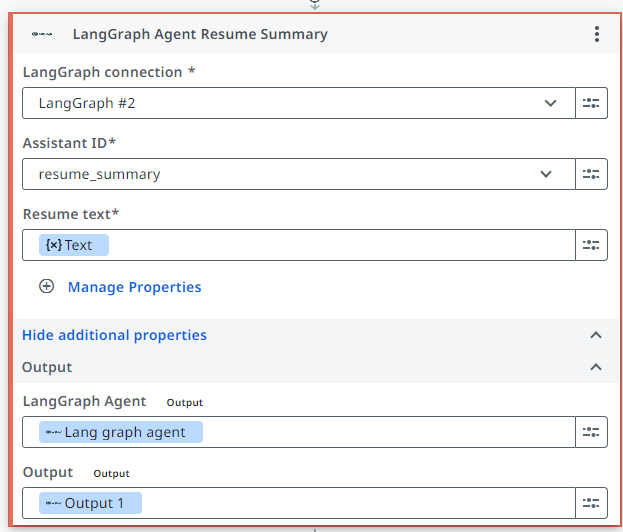
10. The agent’s outputs are sent to the custom UiPath Action App, where a human can validate and/or update the agent’s work. The robot pauses until this action is complete.
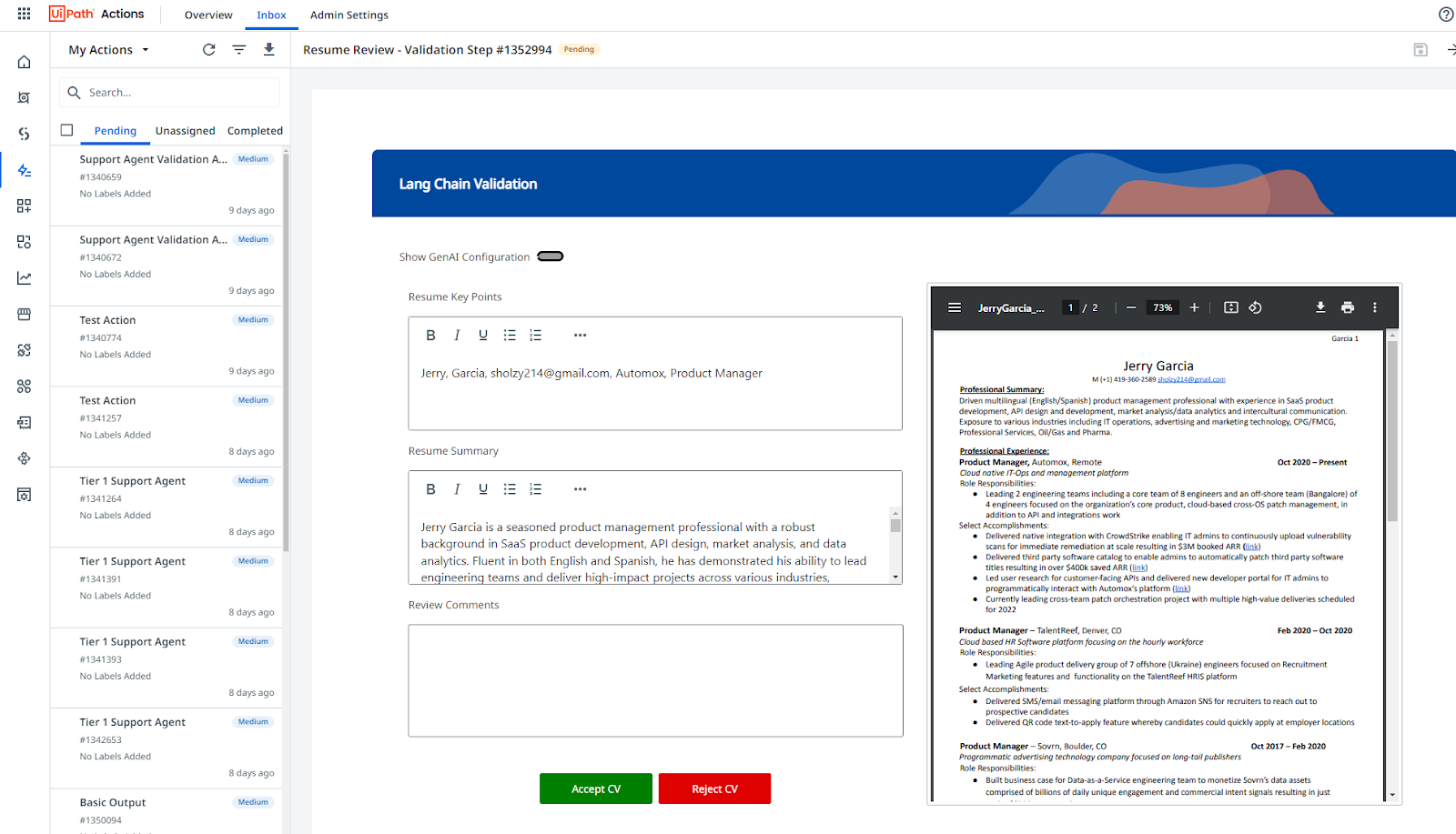
11. Finally, the validated agent outputs are sent back to the robot to finish the workflow by adding a new Pre-Hire to Workday and informing the team of the new resume in Slack.
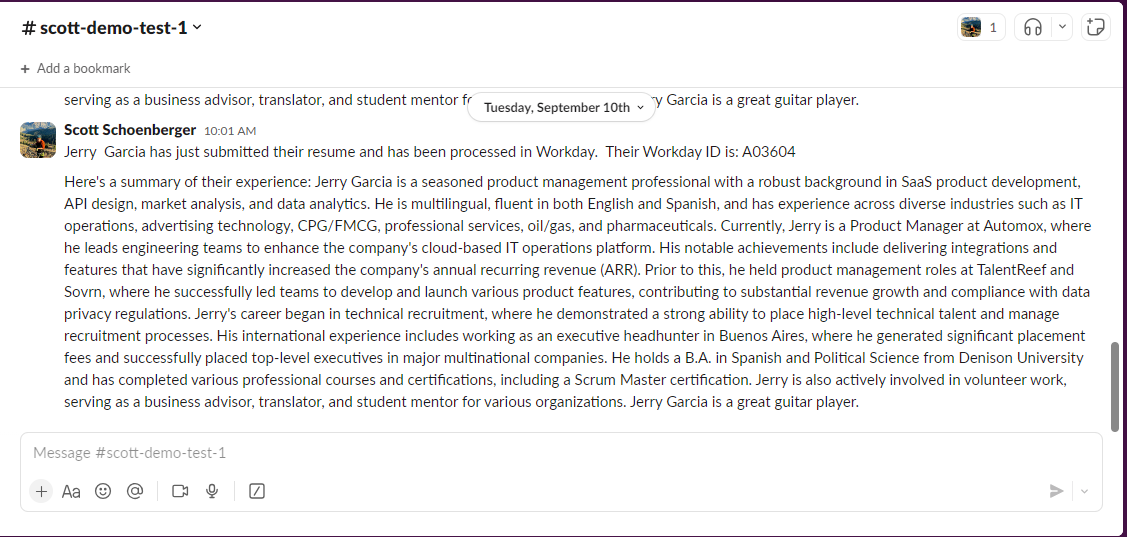
Supercharging workflows with LangGraph and UiPath
Combining the power of LangGraph and the simplicity of UiPath, automation practitioners can supercharge their workflows with both reasoning and decision making capabilities. Business owners are also given the space to exercise control and provide critical inputs. This helps assuage common fears around incorporating GenAI in enterprise automations, such as hallucinations and data privacy concerns.
In conjunction with the growing body of UiPath GenAI features (Document Understanding, Communications Mining, and GenAI Activities), UiPath is delivering on the promise of giving RPA developers and citizen developers alike a choice in how they implement their cognitive architectures for building LLM applications. But this is just the beginning of our support for implementing next-generation agents in the enterprise.
At our flagship FORWARD event, we’ll reveal the future of agentic automation, showcasing how developers can build and orchestrate dynamic, autonomous agentic workflows through the UiPath Platform.
Sr. Product Manager, UiPath
Get articles from automation experts in your inbox
SubscribeGet articles from automation experts in your inbox
Sign up today and we'll email you the newest articles every week.
Thank you for subscribing!
Thank you for subscribing! Each week, we'll send the best automation blog posts straight to your inbox.



